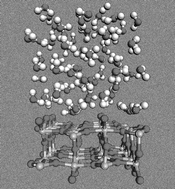The interdependence of defects, electronic structure and surface chemistry†
Abstract
In this article we present three diverse applications of first-principles simulations to problems of materials chemistry and chemical physics. Their common characteristic is that they are essentially problems of the relationships among atomic structures and the properties they promote in real materials and real applications. The studies are on transition-metal


 Please wait while we load your content...
Please wait while we load your content...